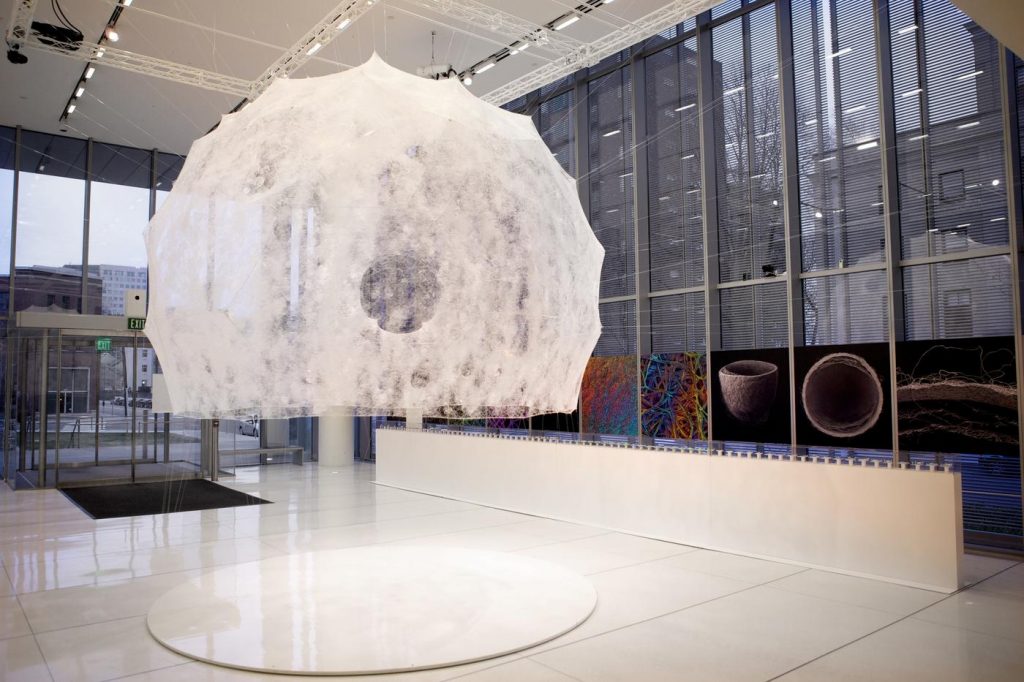For this looking outwards post, I decided to focus on Looking Outwards 06 by Nadia Susanto, which focuses on the Silk Pavilion created by the Mediated Matter Group at the MIT Media Lab. This project explores the relationship between digital and biological fabrication, and uses a collaboration of an algorithm-generated base structure and silkworms to create a layered structure, in order to determine the shape and material optimization of fiber-based surface structures.
I agree with Nadia’s statement of how the combination of real-life insects and computation perform art, rather than purely using computers to randomly generate shapes. The thought of learning from silkworms, adapting the methods to computational design, and re-using silkworms to complete the final pavilion is a really interesting approach to me. However, when I first read Nadia’s post, I wondered why the two “printing” methods were combined, because it seemed quite redundant. After reading the MIT Media Lab’s website on the Silk Pavilion and watching the video, I discovered that the process of having silkworms generating structure was also a research on how the environment would affect the mapping of silkworms, which could be manipulated to create an ideal pavilion structure:
“Affected by spatial and environmental conditions, including geometrical density as well as variation in natural light and heat, the silkworms were found to migrate to darker and denser areas. Desired light effects informed variations in material organization across the surface area of the structure. A season-specific sun path diagram mapping solar trajectories in space dictated the location, size, and density of apertures within the structure in order to lock in rays of natural light entering the pavilion from south and east elevations.”
Mediated Matter, MIT Media Lab
![[OLD FALL 2019] 15-104 • Introduction to Computing for Creative Practice](wp-content/uploads/2020/08/stop-banner.png)
